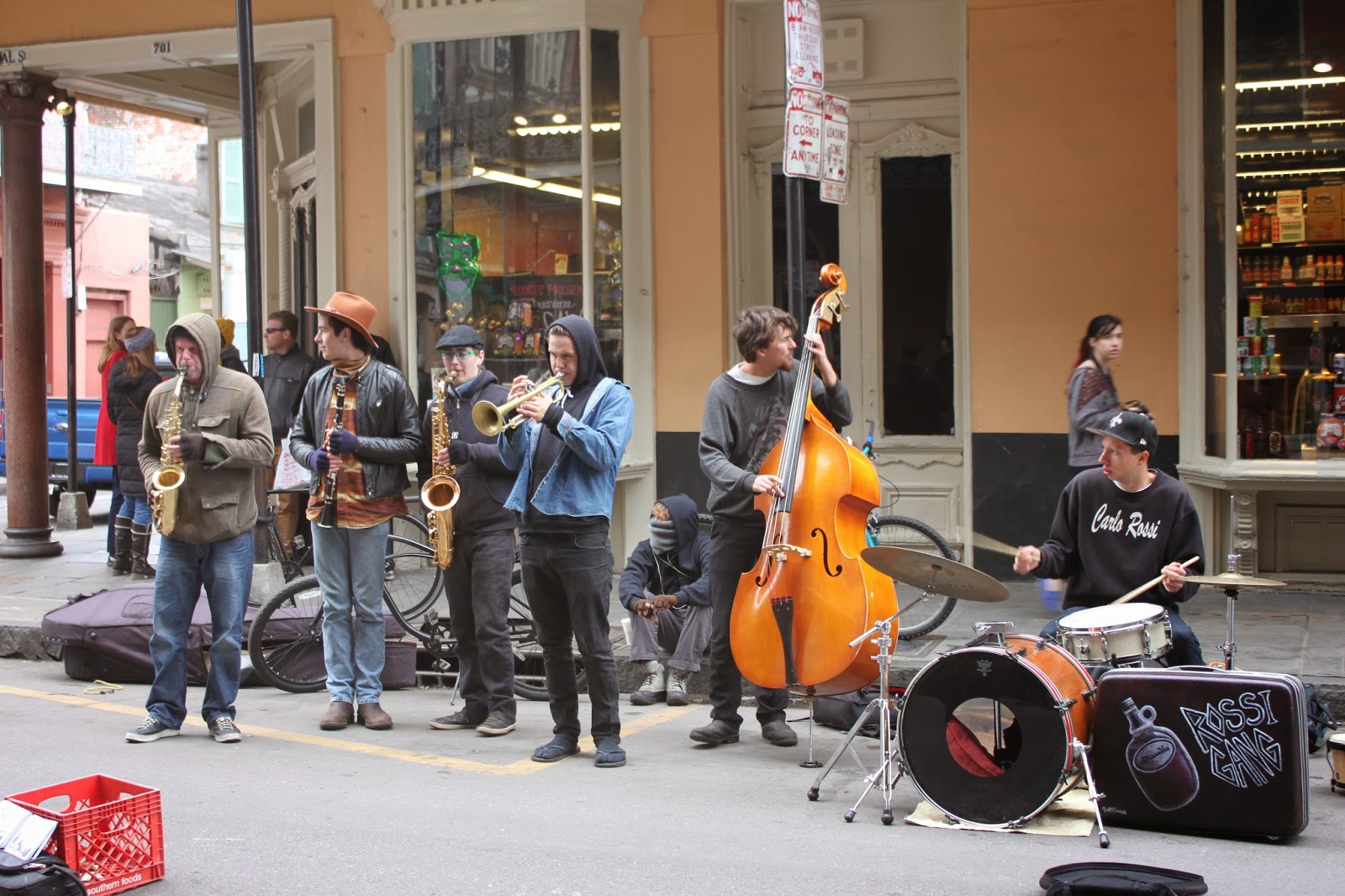The drunken debauchery on Bourbon Street never appealed to me. The gumbo, catfish, andouille sausage, po' boys, and cocktails of New Orleans, however, are another story. My husband and I recently escaped for three days to New Orleans, sans kiddos. We walked the streets, took ghost and plantation tours, went to a show, smiled at street musicians, read two-hundred year-old cemetery plaques, and I ate gumbo for breakfast…and lunch…and dinner.
Gumbo is my new favorite thing. The crab and shrimp gumbo at Brennan's is very good, the seafood gumbo at Peche, which just won the James Beard award for best new restaurant in the South, is to die for, the andouille and chicken gumbo at NOLA, Emeril Lagasse's restaurant, is delicious, but my favorite gumbo is Frank's, a family-owned joint that's been around since the 1960's. Their muffuletta, a typical New Orleans sandwich made with thick bread, olives, a mixture of cheeses, salami and ham, and their gumbo are worth it. Next time you're in New Orleans, order a cup of gumbo and a half muffuletta (it's enourmous enough).
You must be wondering why I haven't mentioned the world famous beignets at Cafe du Monde. One simple reason: Yuck. It was ridiculously cold when we went to New Orleans. The US was experiencing an arctic blast that dropped temperatures to below freezing, even in sub-tropical New Orleans. I was looking forward to a hot cup of cafe au lait and a pile of those beignets everyone keeps talking about. We entered Cafe du Monde, and walked into a chaotic, jam-packed restaurant of people covered with the white dust of powdered sugar. My husband managed to find a table while I made the line to the bathroom, which is located near the kitchen. What I saw made me turn right around, tell my husband to get the heck out of the place, and run away. There is a small army of middle-aged Asian women who work at Cafe du Monde, quick as ants catering to the masses that order beignets and cafe au lait 24 hours a day. I have nothing against middle-aged Asian servers, of course, but I do have something against them grabbing greasy beignets with bare hands, plopping them on plates, pumping pounds of confectioners sugar on them, and sending them off to the tables. One server was eating a snack with one bare hand while using her other bare hand to pile the beignets on a plate. Another used the same bare hand that she used to take someone's cash to serve the next set of beignets to the next customer. So like I said, yuck.
We had a far more agreeable experience at Morning Call, a place that's been around for 142 years. They also serve beignets and cafe au lait and believe me, it's a far more pleasant experience than Cafe du Monde. Here, instead of a chaotic mess, you eat at a pristine marble bar, and instead of servers with dirty hands topping your beignets with pounds of sugar, the servers at Morning Call offer a confectioners sugar canister to give you the choice of the amount of sugar you'd like to top your fried dough. Because let's be honest, that's all they are, those little beignets, fried dough. Nothing to toot anyone's horn about.
New Orleans is awesome. I don't know quite how to put it into words, but the city seems to smile all the time. The French Quarter is all that it's cracked up to be, the plantations that are one hour away are lovely, and brass band shows at Tipitina's are so much fun. I look forward to my next trip and specially my next gumbo breakfast.
Gumbo is my new favorite thing. The crab and shrimp gumbo at Brennan's is very good, the seafood gumbo at Peche, which just won the James Beard award for best new restaurant in the South, is to die for, the andouille and chicken gumbo at NOLA, Emeril Lagasse's restaurant, is delicious, but my favorite gumbo is Frank's, a family-owned joint that's been around since the 1960's. Their muffuletta, a typical New Orleans sandwich made with thick bread, olives, a mixture of cheeses, salami and ham, and their gumbo are worth it. Next time you're in New Orleans, order a cup of gumbo and a half muffuletta (it's enourmous enough).
 |
| Street band on Bourbon Street. 35 degrees fahrenheit and still going! |
We had a far more agreeable experience at Morning Call, a place that's been around for 142 years. They also serve beignets and cafe au lait and believe me, it's a far more pleasant experience than Cafe du Monde. Here, instead of a chaotic mess, you eat at a pristine marble bar, and instead of servers with dirty hands topping your beignets with pounds of sugar, the servers at Morning Call offer a confectioners sugar canister to give you the choice of the amount of sugar you'd like to top your fried dough. Because let's be honest, that's all they are, those little beignets, fried dough. Nothing to toot anyone's horn about.
 |
| Morning Call moved from the French Quarter to City Park after Hurricane Katrina. |
 |
| Oak Alley Plantation |
 |
| Treme brass band at Tipitina's |






























